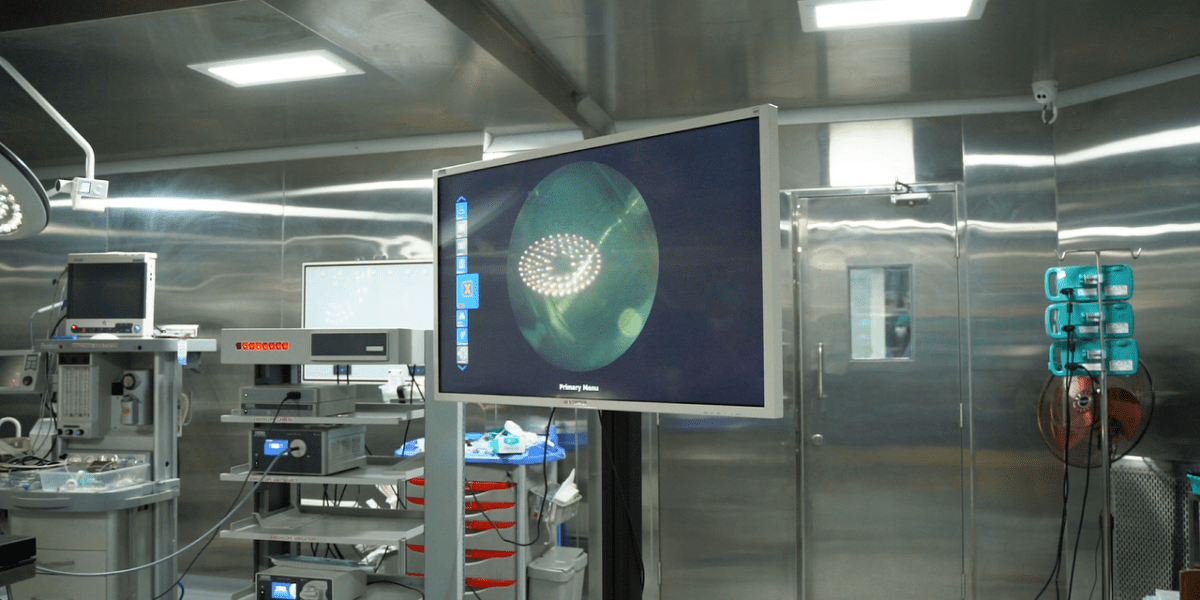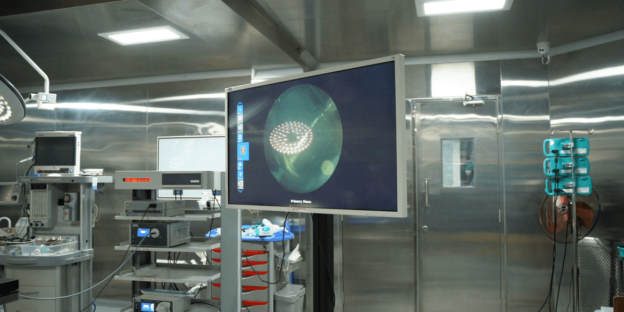A Comprehensive Guide to Minimally Invasive, Endoscopic, and Awake Brain Surgery
Neurosurgery is a specialized field of medicine that focuses on the surgical treatment of diseases and conditions of the brain, spinal cord, and nerves. Neurosurgery has come a long way in recent years, with advances in technology and techniques that have improved patient outcomes and reduced the risks and complications associated with traditional open surgery.
In this article, we will explore some of the various surgical techniques used in neurosurgery, including minimally invasive techniques, endoscopic surgery, and awake brain surgery.
Minimally Invasive Techniques
Minimally invasive techniques have become increasingly popular in neurosurgery due to their reduced risks and complications compared to traditional open surgery. These techniques involve the use of specialized instruments and advanced imaging technology to access and treat areas of the brain and spine without making large incisions.
- Keyhole Craniotomy
A keyhole craniotomy is a minimally invasive technique used to remove brain tumors and other abnormal tissue. The procedure involves making a small incision in the scalp and using specialized instruments to create a small hole in the skull. The neurosurgeon can then use specialized instruments and imaging technology to access and remove the tumor or abnormal tissue through the small opening. Keyhole craniotomy can result in less blood loss, less pain, and a quicker recovery time compared to traditional open surgery.
- Lumbar Puncture
A lumbar puncture is a minimally invasive technique used to collect cerebrospinal fluid (CSF) for diagnostic purposes. The procedure involves inserting a needle into the lower back and withdrawing a small amount of CSF for analysis. Lumbar puncture is used to diagnose conditions such as meningitis, encephalitis, and multiple sclerosis.
- Epidural Steroid Injection
An epidural steroid injection is a minimally invasive technique used to treat chronic pain in the neck, back, and legs. The procedure involves the injection of a steroid medication into the epidural space, the area surrounding the spinal cord and nerve roots. The steroid medication can reduce inflammation and alleviate pain associated with conditions such as herniated discs and spinal stenosis.
In addition to the techniques already discussed, there are several other minimally invasive techniques that can be used in neurosurgery.
- Microvascular Decompression
Microvascular decompression is a minimally invasive technique used to treat trigeminal neuralgia, a condition that causes severe facial pain. The procedure involves the insertion of a small cushion between a nerve and a blood vessel that is causing pressure on the nerve. This can alleviate the pain associated with trigeminal neuralgia.
- Stereotactic Radiosurgery
Stereotactic radiosurgery is a minimally invasive technique used to treat brain tumors. The procedure involves the use of focused radiation beams to target and destroy the tumor without the need for surgery. Stereotactic radiosurgery can be used to treat tumors that are difficult to reach with traditional surgery or tumors that are too small to be seen on imaging studies.
- Laser Interstitial Thermal Therapy
Laser interstitial thermal therapy (LITT) is a minimally invasive technique used to treat brain tumors, epilepsy, and other neurological conditions. The procedure involves the insertion of a laser probe into the brain, which delivers high-energy laser beams to destroy the damaged tissue. LITT is less invasive than traditional open surgery and can result in less blood loss, less pain, and a quicker recovery time.
- Endovascular Surgery
Endovascular surgery involves the use of a catheter, a thin tube-like instrument, to access blood vessels in the brain and treat conditions such as aneurysms and arteriovenous malformations. The catheter is inserted through a small incision in the groin and guided to the targeted blood vessel using imaging techniques such as X-rays. Once the catheter reaches the targeted area, the neurosurgeon can use various tools, such as coils or stents, to treat the condition. Endovascular surgery is less invasive than traditional open surgery, and patients usually have a shorter hospital stay and a quicker recovery time.
- Minimally Invasive Spine Surgery
Minimally invasive spine surgery (MISS) is a technique that uses small incisions and specialized instruments to treat spine conditions such as herniated discs, spinal stenosis, and spinal tumors. The procedure involves the use of a small camera, called an endoscope, that is inserted through the incision to provide the neurosurgeon with a clear view of the spine. The neurosurgeon then uses specialized instruments to remove the damaged tissue and treat the condition. MISS is less invasive than traditional open surgery and can result in less blood loss, less pain, and a quicker recovery time.
Endoscopic Surgery
Endoscopic surgery involves the use of an endoscope, a thin, flexible tube with a camera and light attached to the end, to access and treat areas of the brain and spine. Endoscopic surgery has several advantages over traditional open surgery, including less blood loss, reduced risk of infection, shorter hospital stays, and quicker recovery times.
- Endoscopic Third Ventriculostomy
Endoscopic third ventriculostomy (ETV) is a minimally invasive technique used to treat hydrocephalus, a condition that causes excess fluid to accumulate in the brain. The procedure involves the use of an endoscope to create a small hole in the floor of the third ventricle, a fluid-filled chamber in the brain. This allows the excess fluid to flow out of the brain and be absorbed by the body. ETV can be a safe and effective alternative to traditional shunt surgery for treating hydrocephalus.
- Endoscopic Pituitary Surgery
Endoscopic pituitary surgery is a minimally invasive technique used to remove tumors and other abnormalities in the pituitary gland, a small gland at the base of the brain. The procedure involves the use of an endoscope to access the pituitary gland through the nose and sinuses. Endoscopic pituitary surgery can result in less blood loss, reduced risk of infection, and quicker recovery times compared to traditional open surgery.
- Endoscopic Spine Surgery
Endoscopic spine surgery is a minimally invasive technique used to treat a variety of spinal conditions, including herniated discs, spinal stenosis, and spinal tumors. The procedure involves the use of an endoscope to access the spine through a small incision. Endoscopic spine surgery can result in less blood loss, reduced risk of infection, and quicker recovery times compared to traditional open surgery.
- Endoscopic Colloid Cyst Resection
Colloid cysts are noncancerous growths that can occur in the brain and cause symptoms such as headaches, nausea, and vomiting. Endoscopic colloid cyst resection is a minimally invasive technique used to remove these cysts. The procedure involves the use of an endoscope to visualize the cyst and specialized instruments to remove it. Endoscopic colloid cyst resection is less invasive than traditional open surgery and can result in less blood loss, less pain, and a quicker recovery time.
Awake Brain Surgery
Awake brain surgery, also known as awake craniotomy, is a specialized technique used to treat brain tumors and other abnormalities located in areas of the brain that control important functions such as speech, movement, and sensation. The procedure involves keeping the patient awake and alert during the surgery so that the neurosurgeon can monitor the patient’s brain function and avoid damaging critical areas of the brain.
During awake brain surgery, the patient is given local anesthesia to numb the scalp and skull, but remains awake and alert throughout the procedure. The neurosurgeon uses advanced imaging technology and specialized instruments to remove the tumor or abnormal tissue while monitoring the patient’s brain function. The patient is asked to perform various tasks such as speaking, moving, or feeling sensations to help the neurosurgeon avoid damaging critical areas of the brain.
Awake brain surgery can be a safe and effective technique for treating brain tumors and other abnormalities located in critical areas of the brain. It allows the neurosurgeon to remove as much of the abnormal tissue as possible while minimizing the risk of damage to critical areas of the brain.
Conclusion
Neurosurgery has come a long way in recent years, with advances in technology and techniques that have improved patient outcomes and reduced the risks and complications associated with traditional open surgery. Minimally invasive techniques, endoscopic surgery, and awake brain surgery are just a few of the many specialized techniques used in neurosurgery to treat a variety of conditions and diseases of the brain and spine.
If you or a loved one is facing a neurosurgical procedure, it is important to talk to your neurosurgeon about the various surgical techniques available and which technique may be best suited to your specific needs and condition. With the right technique and skilled neurosurgeon, many patients can achieve excellent outcomes and a faster recovery time.
Dr. Rao’s Hospital – the best in neurosurgery care in Guntur, India
Dr. Rao’s Hospital is a multispecialty hospital that offers advanced medical treatment and surgical procedures, including neurosurgery. The hospital is equipped with state-of-the-art technology and facilities to ensure the best possible care for patients.
The neurosurgical team at Dr. Rao’s Hospital is highly skilled and experienced in a variety of neurosurgical techniques, including minimally invasive techniques, endoscopic surgery, and awake brain surgery. The hospital offers a comprehensive range of neurosurgical services, from diagnosis to treatment and rehabilitation.
In addition to neurosurgery, Dr. Rao’s Hospital offers a range of other medical and surgical specialties, including cardiology, oncology, gastroenterology, and orthopedics, among others. The hospital is committed to providing quality and compassionate care to patients in a comfortable and welcoming environment.
Overall, Dr. Rao’s Hospital in Guntur is a leading healthcare provider in the region, offering advanced medical treatment and surgical procedures, including neurosurgery, with a skilled and experienced team of medical professionals.
#neurosurgery #neurosurgicaltechniques #minimallyinvasivetechniques #endoscopicsurgery #awakebrainsurgery #neuroscience #surgery #medicine #healthcare #medicaltechnology #brainhealth #patientcare


